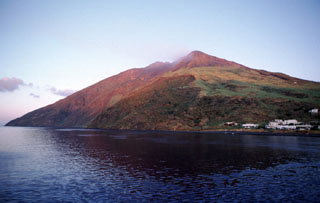Report on Stromboli (Italy) — 22 February-28 February 2023
Smithsonian Institution / US Geological Survey
Weekly Volcanic Activity Report, 22 February-28 February 2023
Managing Editor: Sally Sennert.
Please cite this report as:
Global Volcanism Program, 2023. Report on Stromboli (Italy) (Sennert, S, ed.). Weekly Volcanic Activity Report, 22 February-28 February 2023. Smithsonian Institution and US Geological Survey.
Stromboli
Italy
38.789°N, 15.213°E; summit elev. 924 m
All times are local (unless otherwise noted)
INGV reported that both explosive and effusive activity at Stromboli occurred during 20-26 February at two vents in Area N, within the upper part of the Sciara del Fuoco, and at least two vents in the Area C-S (South-Central Crater area) in the crater terrace area. Explosions at vents N1 and N2 in Area N were variable in intensity and ejected coarse material (bombs and lapilli) 80-150 m at a rate of 2-7 explosions per hour. Spattering occasionally occurred at N2 vents during 20-24 February and was sometimes intense. Explosive activity at S2 in the Central-South area (CS) ejected fine-to-coarse material as high as 150 m above the vent at a rate of 1-7 explosions per hour. At around 0700 on 27 February lava overflowed vents in Area N and produced lava flows and at around midnight intense spattering in the same area was visible. Spattering continued at least through 2100 on 28 February; the lava flows were cooling, though some areas were hot due to accumulated material.
Geological Summary. Spectacular incandescent nighttime explosions at Stromboli have long attracted visitors to the "Lighthouse of the Mediterranean" in the NE Aeolian Islands. This volcano has lent its name to the frequent mild explosive activity that has characterized its eruptions throughout much of historical time. The small island is the emergent summit of a volcano that grew in two main eruptive cycles, the last of which formed the western portion of the island. The Neostromboli eruptive period took place between about 13,000 and 5,000 years ago. The active summit vents are located at the head of the Sciara del Fuoco, a prominent scarp that formed about 5,000 years ago due to a series of slope failures which extends to below sea level. The modern volcano has been constructed within this scarp, which funnels pyroclastic ejecta and lava flows to the NW. Essentially continuous mild Strombolian explosions, sometimes accompanied by lava flows, have been recorded for more than a millennium.

